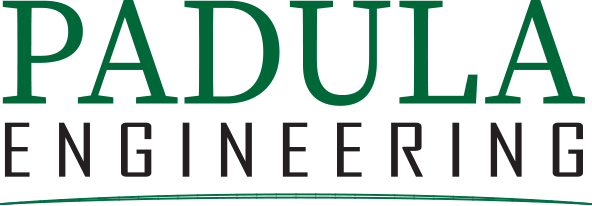Land Development That Keeps Your Project Moving
Land development in Lower Merion isn’t straightforward. Each site comes with its own set of zoning limits, drainage rules, and design restrictions. Some properties fall under historic overlays. Others sit on steep slopes or near protected areas. If your plans miss even one of these details, the township review process can slow down fast, or stop altogether.
That’s why early planning matters. At Padula Engineering, we don’t just draw plans. We help you understand what the site allows, what the township expects, and how to bring those together in a way that works. Our team has guided projects across Lower Merion, from infill lots to whole subdivisions, and we focus on one thing: helping you move forward with fewer delays and fewer surprises.
Why Land Development Projects in Lower Merion Get Held Up
Developing land seems straightforward at first. But each property comes with specific challenges. Zoning overlays, historic districts, or steep slopes can block projects that don’t have carefully prepared plans. Stormwater and erosion control standards also must be met.
Without local knowledge, your project can hit roadblocks quickly. Padula Engineering knows precisely what the township expects. We make sure your land development plans meet all township rules. This approach helps you avoid costly revisions and unnecessary delays.
What’s Included in Our Land Development Support
Our land development process covers everything you need to move from idea to permit. We give you clear plans that match Lower Merion’s requirements.
Concept Planning and Site Yield
We start by evaluating your property’s potential. Our early site layout shows how many lots or units your land can realistically support. We also define access points and road layouts clearly. This early planning keeps you from wasting time on designs that don’t match township regulations.
Grading and Stormwater Design
Stormwater management and grading are significant issues in Lower Merion. We carefully assess how water naturally moves on your site. Then we design a grading and drainage plan that complies with township standards and the Pennsylvania DEP. Good stormwater plans speed up approvals and reduce problems later on.
Utility Layout and Coordination
Connecting utilities like water, sewer, gas, and electricity requires early planning. We work directly with utility providers to make sure connections are practical. Our plans clearly show utility layouts and service routes, reducing conflicts during construction.
Zoning and Code Compliance
Lower Merion’s zoning rules can be strict. We carefully study township codes, setbacks, impervious coverage limits, and historic overlays. Our goal is simple: your design stays fully compliant. You get a buildable layout from the start, without needing extra revisions.
Clear Steps from Feasibility to Final Submission
Land development is smoother when each step is clearly defined. We make the process easy to follow. Here’s how we guide your project through Lower Merion’s process:
Site Review and Constraints Analysis
We review your site carefully from day one. We identify slopes, zoning restrictions, floodplains, and any environmental issues. This helps us catch problems early before they slow you down.
Preliminary Layout and Team Feedback
Next, we prepare an initial concept plan. We discuss it directly with you and your project team. This ensures everyone agrees before we spend time drafting detailed plans.
Full Engineering Plan Set
Once everyone approves the layout, we prepare the detailed engineering plans. These include grading, drainage, erosion control, and utility layouts. Our plans are clean, organized, and ready for the township’s review.
Township Submissions and Revisions
Submitting plans to Lower Merion is detailed and specific. We manage your submission paperwork carefully. If the township requests revisions or additional details, we handle them promptly and clearly.
Construction and Post-Approval Support
After your plans are approved, construction begins. And during construction, unexpected questions can arise. We stay available to clarify plans, address minor changes, and support your contractor. We help keep your project moving forward, even after approval.
Frequently Asked Questions About Land Development in Lower Merion
Usually, yes. Even small subdivisions require detailed land development plans in Lower Merion. We can help confirm what’s needed for your specific project.
Zoning overlays like historic districts, steep slope, or environmental protections can significantly limit your design. We review these overlays early to prevent surprises.
Yes. We handle challenging sites regularly. Our designs comply with township slope requirements and manage drainage effectively, even on tight lots.
Approval timelines vary by project, but expect initial township review periods of around 3 to 5 weeks. Revisions can extend this timeframe. We communicate timelines scheduled from the start.
About Lower Merion
Lower Merion is a developed township with a unique mix of neighborhoods and commercial areas. The township has older homes, new construction sites, and protected historic districts. This combination creates unique challenges for land development.
Understanding Lower Merion’s expectations and local context is essential. We’ve worked throughout the township on different property types. Our experience helps us navigate zoning requirements and neighborhood concerns smoothly. You benefit directly from our local knowledge, moving your project forward with fewer obstacles.
Move Forward with the Right Plan
You don’t need to struggle with complicated regulations or confusing submissions. At Padula Engineering, our process is straightforward. We provide clear guidance at every step, from site layout to township approval.
You get land development plans that work—plans explicitly tailored for Lower Merion’s regulations. Our practical approach helps avoid delays, revisions, and frustration.
If you’re ready to start your project, let’s talk. Padula Engineering is here to make land development straightforward for your Lower Merion project.
